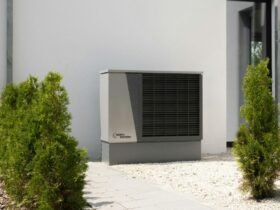Fall brings more than cooler temperatures—it brings higher humidity, more rain, and greater stress on your home’s internal systems.
In a place like Bay Ridge, NY, the change from summer to fall is sharp. You go from warm, dry days to chilly, damp evenings almost overnight. This quick shift can expose small weaknesses in your home that went unnoticed all summer. If you don’t catch these problems early, you could end up with water damage, mold, or heat loss when winter rolls in.
This article focuses on some lesser-known issues that are often missed during routine fall prep.
1. Why Now’s the Time to Check Your Sump Pump
If your home has a basement or crawl space, a working sump pump is one of the most important tools for keeping it dry. Fall is when rain picks up and groundwater levels rise. A neglected sump pump can fail when you need it most, leading to water damage, mold, or even electrical hazards.
In areas where older homes and coastal rain patterns are common, flooding is a regular concern. Many homeowners forget about their sump pump until it stops working during a storm. That’s why it’s smart to test it now, while the weather is still mild. Listen for strange sounds, check that it turns on and off properly, and inspect the discharge pipe for blockages.
If you notice anything off, don’t wait. Professional sump pump repair in Bay Ridge, NY can prevent thousands of dollars in damage later. And even if your system seems fine, having it inspected now means one less thing to worry about when the heavy rain comes.
2. Gaps Around Windows and Doors That Let Heat Escape
Drafts are one of the main reasons homes lose heat in the fall and winter. But many people don’t realize how much warm air slips out through loose seals around windows and doors. These gaps also let in moisture, which can lead to rot or mold in wood frames.
To check for leaks, stand near windows and doors on a windy day and feel for cold air. You can also hold a lit candle or incense stick and move it slowly along the edges. If the flame or smoke wavers, you’ve found a leak. Replacing weather stripping or sealing gaps with caulk is usually enough to fix the problem—and it’ll help lower your energy bills, too.
3. Vents and Attic Insulation That Don’t Work Together
Your attic does more than store boxes. It plays a key role in keeping your home warm and dry. If your attic insulation is old, compacted, or poorly placed, it can trap heat and moisture instead of letting your home breathe.
Blocked soffit vents are another common issue. These vents help move air through your attic, but they get clogged with dust, insulation, or even nesting animals. When airflow is blocked, your roof stays damp longer after rain, and that can lead to wood rot or mold. Take a look in your attic with a flashlight. If the insulation looks uneven or discolored, or if you see signs of moisture, it may be time for an update.
4. Small Plumbing Leaks That Stay Hidden Until It’s Too Late
Tiny leaks behind walls or under sinks are easy to miss. But once the temperature drops and indoor humidity changes, those small leaks can lead to bigger problems like warped wood, mold growth, or higher water bills.
Fall is a smart time to check for signs of water where it doesn’t belong. Look under sinks, behind toilets, and near water heaters. Feel for damp spots or discoloration on walls. A musty smell can also be a clue that something is leaking where you can’t see it. If you’re not sure, a low-cost moisture meter can help you find hidden dampness before it becomes a disaster.
5. Dryer Vents That Trap More Than Lint
You probably clean your dryer’s lint filter regularly, but the vent system behind the machine is easy to forget. When lint builds up inside the vent hose or exhaust duct, it slows down airflow. That makes your dryer run longer, wastes energy, and increases the risk of fire.
Fall is a great time to disconnect the dryer, check the vent hose, and clear out any trapped lint or debris. If your dryer takes longer than usual or feels hotter than normal, it could be a sign the airflow is blocked. While you’re at it, make sure the outside vent flap opens easily and isn’t covered by leaves or dirt.
6. Gutters and Downspouts That Don’t Drain Right
Even if your gutters are clean, misalignment or bad connections can still cause problems. When downspouts point the wrong way or sag, water may pool near your foundation instead of flowing away from the house. That can lead to leaks or even cracks in the base of your home.
Watch what happens the next time it rains. If water is spilling over the edge of the gutters or collecting at the base of your walls, your drainage system isn’t working as it should. Realigning the gutters or adding extensions to your downspouts can keep water away from your home and reduce the risk of moisture damage.
Home maintenance doesn’t always mean big projects. Often, it’s the small, hidden issues that lead to the biggest problems later. By checking these areas now, you’ll avoid unexpected repairs and keep your home comfortable through the colder months.
You don’t need expensive tools or expert skills to spot most of these problems. What you need is a plan and a little time before the season shifts. Walk around your home, take notes, and fix what you can. If something looks beyond your skill level, call a professional.
Fall comes fast, and once it’s here, many repairs get harder to manage. With a few smart checks now, you’ll stay ahead of the weather—and avoid the kind of surprises no homeowner wants to deal with.













